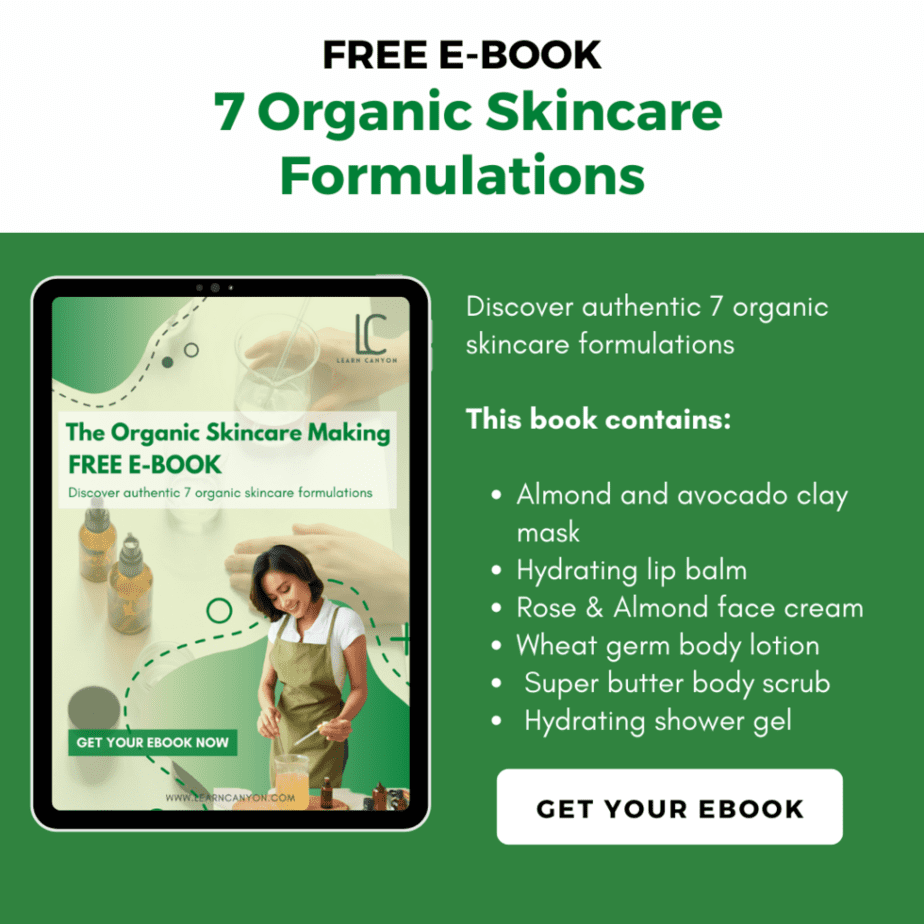
Sclerotium gum : everything you should know

What is sclerotium gum?
Sclerotium gum is a polymer made by the filamentous bacterium Sclerotium rolfsii during fermentation. Sclerotium gum is a gel-like polysaccharide (sugar-based) component that comes from nature. Cosmetics employ sclerotium gum to thicken and stabilise formulations. It also serves as a skin conditioner.
| What is it? | Sclerotium gum is a polymer made by the filamentous bacterium Sclerotium rolfsii during fermentation. |
|---|---|
| INCI | Sclerotium Gum |
| Appearance | White to Light Beige Powder |
| Texture | Fine and soft |
| Recommended Usage | 0-2% |
| Solubility | Water soluble |
| Melting point | NA |
| Boiling point | NA |
| pH | 2.5 to 12 |
| Aroma | Characteristic odor |
| Why do we include it in formulations? | Sclerotium Gum is a flexible gel-like thickening ingredient used in cosmetics and beauty products. |
| How to work with it? | 0.2-0.5 percent is added to the water phase. Adding Sclerotium Gum to your oil phase minimises the amount of oil necessary, resulting in a lighter, lotion-like cream. |
| Applications | It exhibits rheological qualities, is thermally stable, keeps skin moisture, and is hydrolysis resistant. It is utilised in personal care and cosmetic goods as a thickening, emulsifying, and stabilising ingredient. |
| Absorption rate | Average to fast |
| Strength | To avoid the separation of pigments. |
| Weaknesses | Expensive |
| Substitution | Agar agar, guar gum and cornstarch. |
| How to store it? | At a temperature of 50°-77°F (10°-25°C), protected from direct light and humidity |
| Shelf life | Sclerotium gum has a 12-month shelf life when properly stored and sealed. |
| Type of ingredient | Gum |
|---|---|
| Main benefits | A polysaccharide gum that acts as a natural thickening and gelling agent in personal care products. |
| Who should use it | All skin types |
| How often can you use it? | Daily |
| Works well with | Work well with most skincare ingredients. |
| Doesn't work with | NA |
| How to use | Sclerotium Gum increases viscosity while preserving high fluidity, flexibility, and pouring qualities when employed at low levels in formulations, ranging from 0.5 to 2.0 percent. |
Mechanisms of action
Sclerotium gum is a sugar-based polysaccharide that has a gel-like texture. Polysaccharides are responsible for the skin’s natural ability to hydrate and retain water, making them an overachiever in the skin-replenishing department.
They’re also important for skin regeneration and healing. Polysaccharides have the unique ability to bond to the skin more tightly and for a longer period of time than other moisturising ingredients.
Benefits of sclerotium gum
Sclerotium Gum is a non-ionic thickener derived from the fermentation of fungus. This flexible gum has a high thermal stability and can aid in improving the skin’s moisture barrier, decreasing trans-epidermal water loss and keeping the skin hydrated.
Sclerotium gum is a good suspending agent because particles dispersed in a sclerotium gum gel will not settle. When working with alpha-hydroxy acids, sclerotium gum is a great choice. It’s a flexible component that helps to improve the texture of cosmetics.
It has a gel texture and is used as a thickening agent. It also softens the skin and functions as a natural moisturiser. Sclerotium Gum is also an excellent suspension agent, holding particles in suspension and preventing sedimentation, making it ideal for usage in pigment and sunscreen compositions.
Side effects of sclerotium gum
Sclerotium gum has been deemed safe for use in cosmetics by the Cosmetics Ingredient Review Board on many occasions.
How to use it in formulation?
When producing creams, sclerotium gum can be used as a thickening and emulsifying agent. Add 0.2-0.5 percent to the water phase.
Sclerotium Gum decreases the amount of oil needed in the oil phase, resulting in a lighter, lotion-like cream. Use 2 percent Sclerotium Gum to form a gel basis.
Works well with other ingredients
Sclerotium Gum’s versatility, stability, and compatibility make it a great choice for all personal care products. Because of its non-ionic nature, it can be utilised in a wide pH range (5.0 to 12.0), and it’s compatible with most other thickeners and surfactants.
In formulations including cationic emulsifiers and conditioners, particularly BTMS, this is the polymer of choice. Sclerotium gum is an excellent choice for working with alpha-hydroxy acids.


